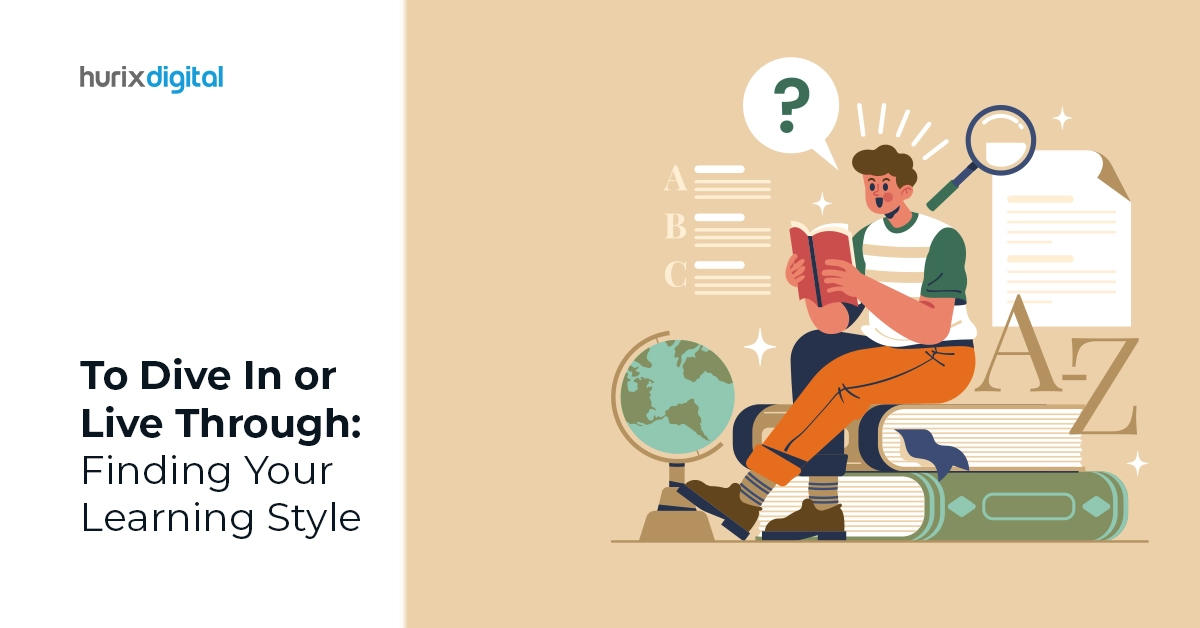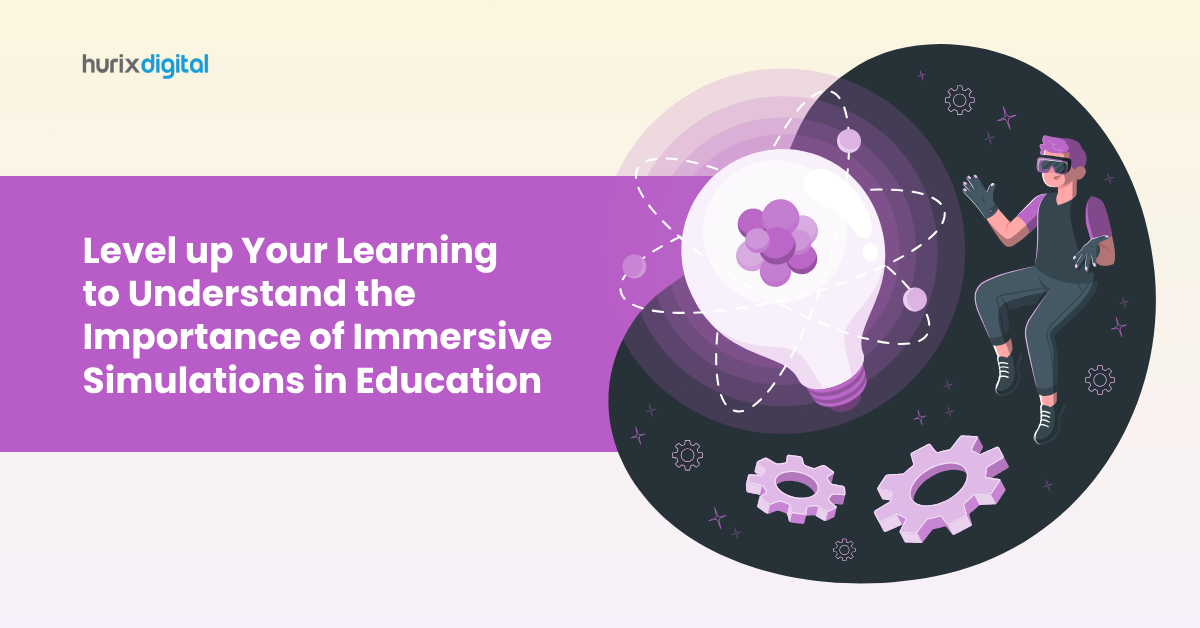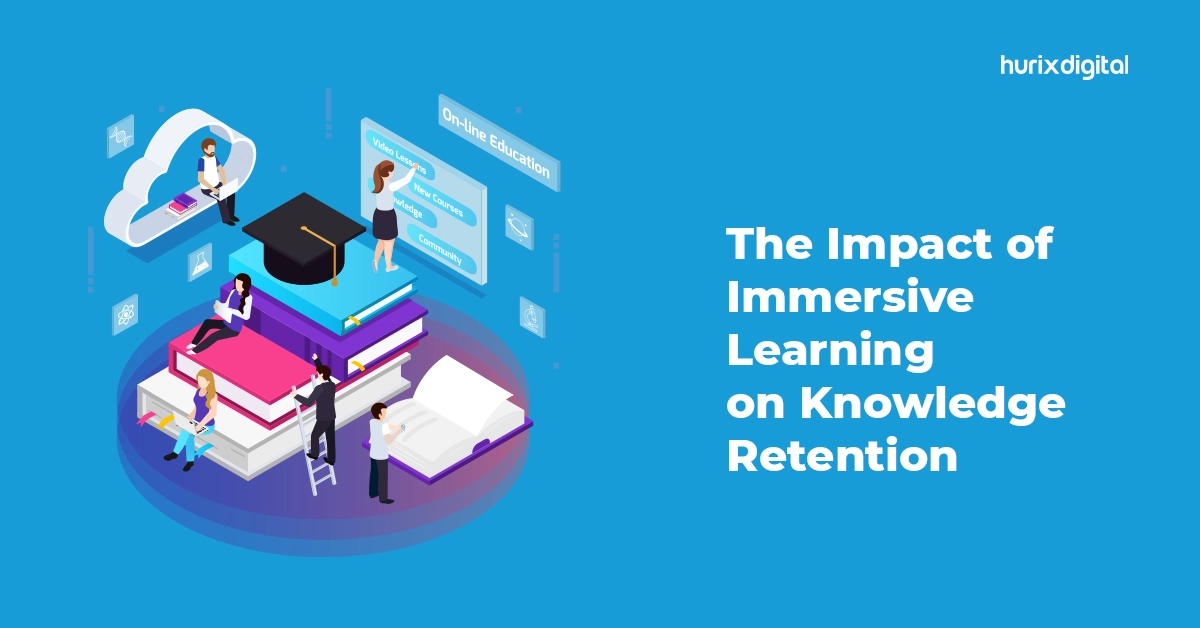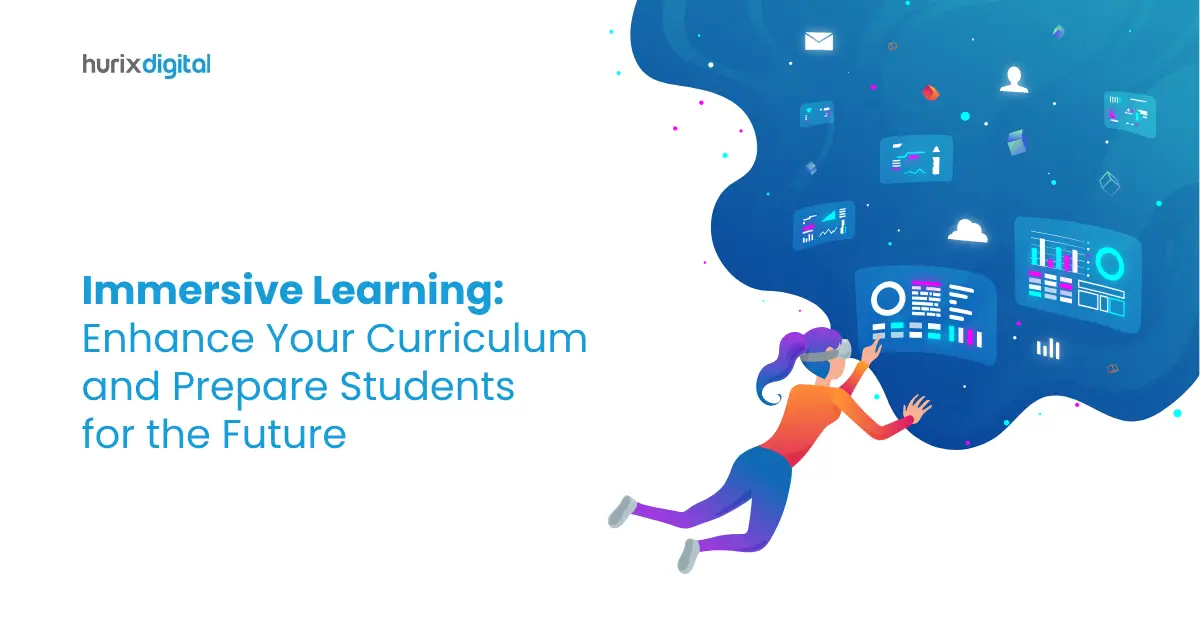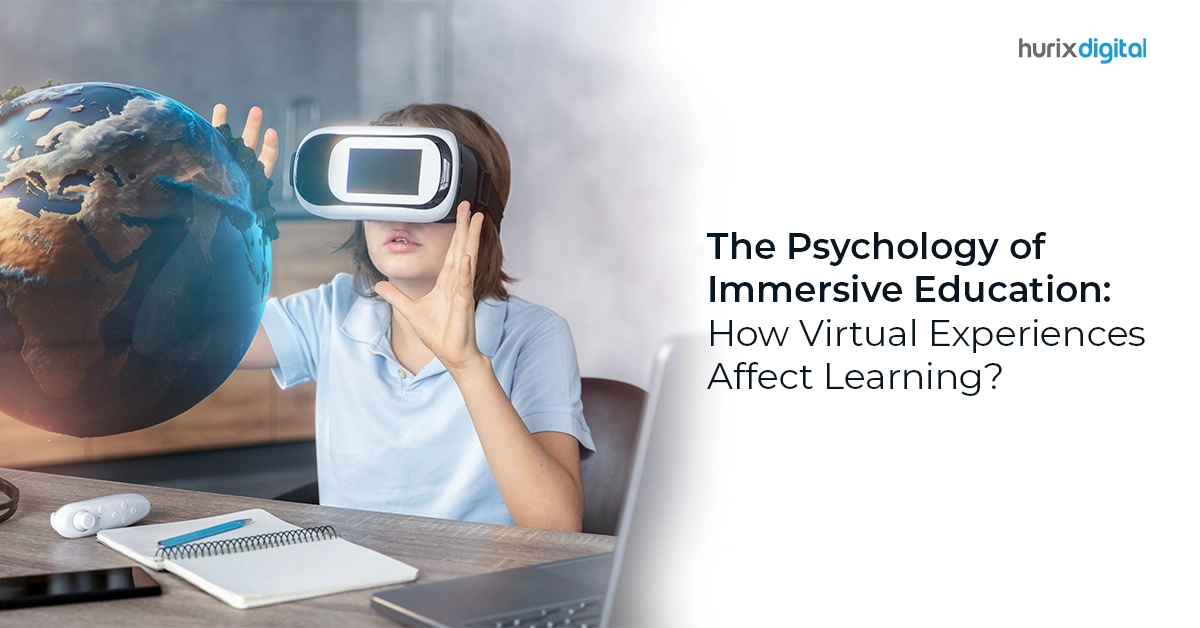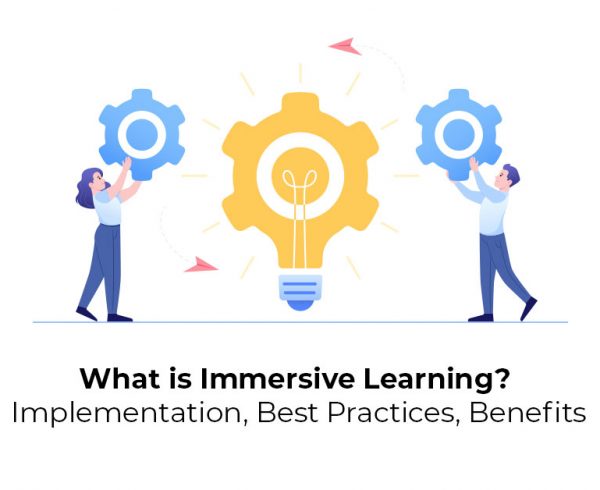Summary
The education industry is swiftly evolving, propelled by technological innovations and novel learning strategies. Immersive learning harnesses virtual reality (VR) to create realistic simulations, complementing experiential learning, which prioritizes the application of skills in real-world contexts. Integrating these approaches fosters active learner engagement, elevates motivation, and deepens understanding, thereby significantly enriching the educational experience.
The education industry is propelling forward amidst an explosive surge in technological advancements and progressive learning needs. The immersive technology market size was valued at USD 22.5 billion in 2022 and is expected to hit around USD 167.75 billion by 2032. With that in mind, it is becoming increasingly blurred to find the right learning method amidst this technological jungle of options.
Be it immersive learning or experiential, to arrive at the ideal learning solution, one must understand their benefits and concepts. In this post, we will delve into how these learning methods compare, whether they complement each other, and how they can be used in real-world scenarios.
Table of Contents
- The Top Two Learning Methods: Key Features and Benefits
- Understanding the Difference Between Diving In and Living Through
- Do They Blend, and How?
- Driving the Learning Curve
The Top Two Learning Methods: Key Features and Benefits
As of 2023, the era of rote learning is no longer aligning with a student’s educational or aspirational needs. As technology gallops forward in time, using state-of-the-art concepts in learning modules helps discard the dependency on memorization and enhances a learner’s retention of complex concepts.
To be able to apply concepts in tandem with innovative ideas, the current educational needs resonate with learning modules that encourage the “learning by doing” concept as well as multi-sensory inclusive learning approaches. With that in mind, here are the two top learning methods that have been proven to be effective for enhancing the learning journey of students.
1. Experiential Learning
The age-old concept of “learning by doing” is being adopted into all concepts. Ranging from the practical application of newly learned languages to even performing surgeries, the scope of experiential learning is vast.
With the help of digital methods and technologies, experiential learning’s direct engagement approach takes motivation and engagement toward even theoretical concepts to the next level.
Here are the key experiential learning benefits for every learner:
- Be it a physical or digital exchange, experiential learning facilitates collaboration and teamwork skills through group activities and shared experiences.
- Experiential learning has the potential to expose learners to diverse cultural experiences, nurturing cultural sensitivity and global awareness.
- When exposed to varied real-world scenarios in experiential learning simulation modules, there is a boost in adaptability and flexibility for new challenges.
- Experiential learning presents learners with challenges that require active engagement and thus cultivates problem-solving skills.
2. Immersive Learning
With the use of the latest technology to envelop the learner in a specific environment, immersive learning is a multi-sensory approach to education. Blending cutting-edge technologies like Virtual Reality (VR), Augmented Reality, and Simulation Training, immersive learning incorporates audio, visual, and tactile elements to deliver a comprehensive sensory experience.
Here are the key immersive learning benefits for a learner:
- Immersive learning utilizes realistic and interactive simulations in real-world scenarios to improve the understanding of core concepts.
- They tremendously boost a learner’s scope to apply their understanding when presented with problems in the real world.
- With the help of interactive elements, immersive learning modules have the potential to expedite learning curves and improve motivation toward grasping traditionally monotonous concepts.
- As a learning method centered around inputs to multiple senses, immersive learning unlocks critical thinking skills in learning.
- Immersive learning has brought down several key barriers for a learner, a crucial one being geographical limitations. This plays a huge role in quality remote education.
Also Read: Top 10 Roles of AI in Skill Development in Higher Education
Understanding the Difference Between Diving In and Living Through
Experiential and immersive learning are top delivery methods for learners, yet they are often overlapped or misunderstood. It is imperative to understand how each learning method differs and what it intends to accomplish.
Comparing Experiential and Immersive Learning Across Five Crucial Aspects
To understand more about immersive learning vs experiential learning, here are the nuances between experiential and immersive learning across five crucial aspects that demand understanding:
1. Concept
- Immersive Learning: Utilizes realistic and interactive simulations in real-world scenarios for enhanced understanding.
- Experiential Learning: Engages learners in hands-on activities, emphasizing direct experience and practical application.
2. Driving Focus
- Immersive Learning: Deliver a dynamic learning experience to boost the application of theoretical knowledge in real-world problems.
- Experiential Learning: Promote a learner’s tangible skill application and practical skill development through experience.
3. How It Motivates Learning
- Immersive Learning: Improves motivation through interactive elements, making learning engaging and thus expedites learning curves
- Experiential Learning: Provides immediate relevance and application of learned concepts in a real-world context.
4. How It Encourages Critical Thinking
- Immersive Learning: Unlocks critical thinking skills such as analytical thinking by engaging multiple senses in the learning process.
- Experiential Learning: Emphasizes active problem-solving, fostering critical thinking abilities through real-world challenges.
5. Barriers Addressed
- Immersive Learning: Overcomes geographical limitations, enabling quality remote education through virtual immersion.
- Experiential Learning: Addresses cognitive, emotional, and social aspects of learning, ultimately delivering a holistic understanding in diverse settings.
Examples to Understand the Differences in Learning Focus
With all the above aspects in mind, let’s understand the difference in learning focus with a few examples in higher education:
1. Immersive Learning for Medical Students:
- Within a virtual anatomy lab, medical students utilize immersive learning to navigate intricate 3D models of the human body.
- Engaging in simulated surgeries and organ dissections, they apply theoretical knowledge in a lifelike setting.
Immersive learning targets enhancing their understanding of anatomy and medical procedures through an immersive and interactive experience.
2. Experiential Learning for Finance Interns:
- In a semester-long internship with a financial firm, students analyze real financial data, applying academic insights to authentic financial challenges.
- Interning students engage in client meetings and tackle live projects. This helps them develop social and critical thinking skills through experience.
Experiential learning focuses on the hands-on approach that equips them with practical skills for navigating the complexities of the financial industry.
Also Read: 4 eLearning Trends for the Future of the Higher Education System in 2024
Do They Blend, and How?
Yes, both immersive learning and experiential learning blend beautifully on account of their emphasis on hands-on engagement and learner-centric environments. This opens learning up to numerous innovative possibilities. Blending experiential and immersive learning methods have the potential to captivate learners.
By placing them in realistic scenarios, the right blend of both these learning methods promotes active participation, enhances motivation, and deepens comprehension.
A stellar example would be blending immersive learning, like Virtual Reality simulations, into experiential learning techniques, such as surgeries, which has the potential to reduce the risk of complicated procedures and emphatically improve learning curves.
Driving the Learning Curve
Immersive learning propels creative and dynamic learning environments through multi-sensory modules, and experiential learning accelerates the potential to acquire skills through practical application. Both these methods are, without a doubt, extremely effective, yet it is very important to understand their nuances to arrive at the ideal solution for your learners’ needs.
Driving educational evolution with one learning method may leave you running out of effective educational experiences too soon. That is precisely why it is imperative to keep driving the learning curve with solutions that incorporate a perfect blend.
With the help of learning solution experts like Hurix Digital, the ideal blend of experiential and immersive learning can give rise to unprecedented synergy and ultimately create a practical application drive, dynamic, learner-centric environment. Contact us now, and let’s get started together!


